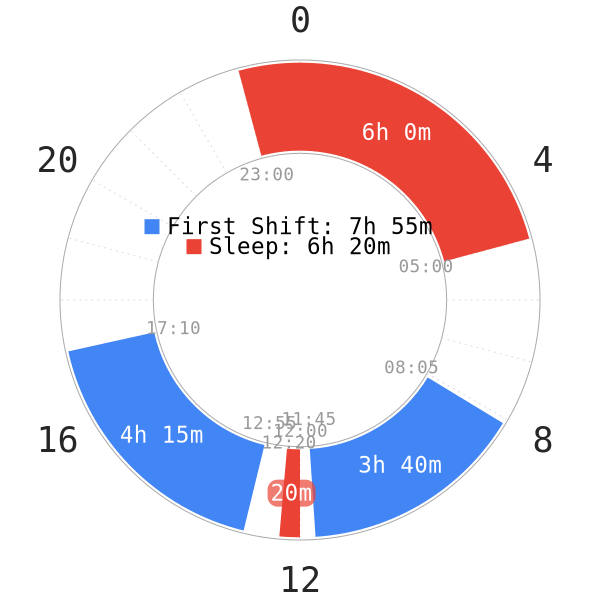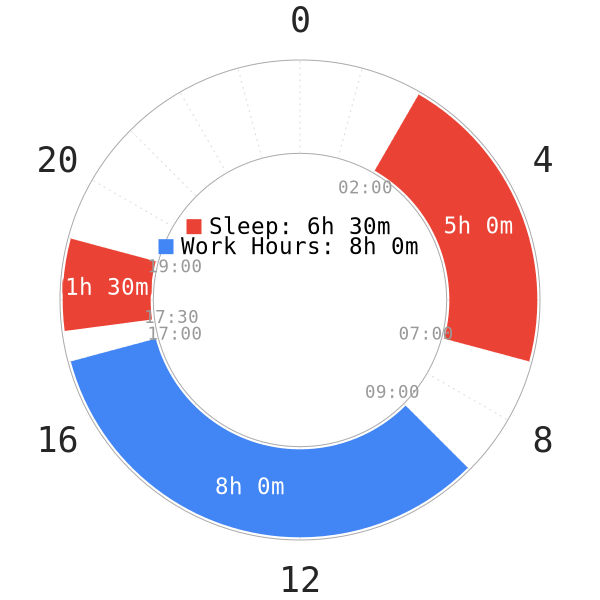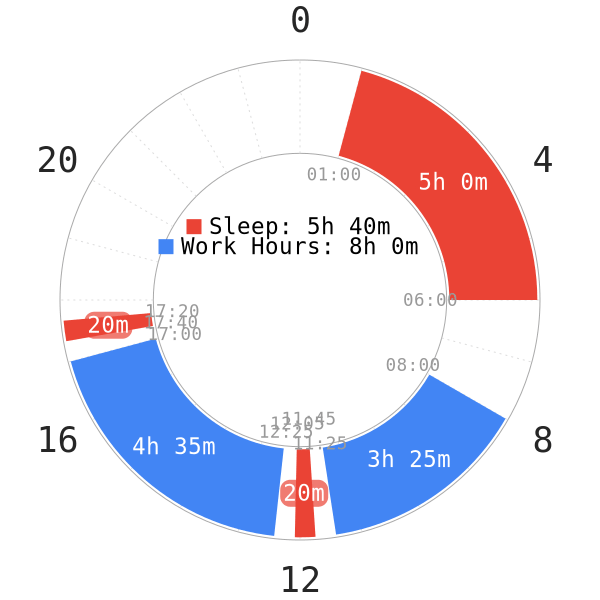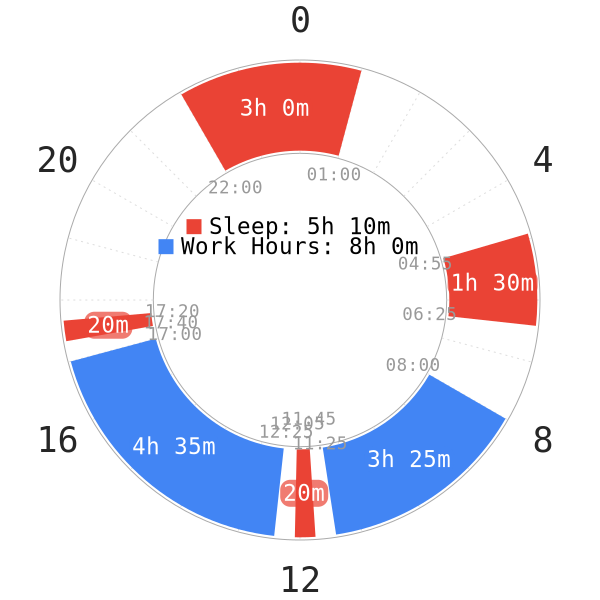Introduction
A first shift is very common, if not to say the most standard working schedule for an average person. Specifically, the 9-to-5 work schedule is a work schedule many people strictly follow. Alternatively, a first shift can also run from 8 AM to 4 PM instead. A lunch break is also common at many workplaces. As such, it is also the standard to build polyphasic sleep schedules around.
Despite its popularity, there are certain notes you should know when scheduling your polyphasic patterns. This post will detail the possible polyphasic schedules that can accommodate first shifts very well and other notes on setting up your sleep times.
Polyphasic Schedules for First Shift
Overview
Almost every polyphasic schedule is viable as long as daytime napping is permissible from the get-go. The nature of the first shift merely prevents sleeping during morning hours and most afternoon hours. Specifically, this usually means no possible sleep at 10:30 AM or the middling 2-3 PM. We present you some of the most popular polyphasic schedules for first shifts below.
Biphasic Sleep
Biphasic sleep is very popular and can easily accommodate daytime napping. It just requires one daytime nap (except Segmented sleep), which allows a long wake period before and after the nap. However, you should eat after the nap.


- Segmented sleep or a late Siesta schedule are the only viable options (with reasonable adaptation difficulty) depending on if you can nap at work. If you cannot nap at any hours from 9 AM to 5 PM or a similarly long wake period in your work schedule.
- Even if you cannot afford to nap after work, Segmented sleep is still the only viable route to take. This is because Segmented sleep focuses on sleeping around graveyard hours without needing any daytime naps.
Everyman sleep

Alongside Biphasic sleep, Everyman sleep can suit first-shift workers very well.
- However, it becomes mandatory that you have to nap at least once (and ideally so) during your work hours. Still, there are potentially many viable Everyman setups you can abuse for this work condition.
- Ensure that you can consistently place a nap around that specific hour. Thus, the consistent lunch break will be crucial.
Dual Core Sleep

Although less common, it is possible to schedule a Dual Core pattern with first shift work. Depending on when you can nap, the Dual Core schedule may or may not be viable.
- The most common issue with these schedules is the sacrifice of a lot of social evening hours because of a core sleep there.
- Excessively long wake gap (e.g, 9h) from the nap to the first core may also make it very difficult to adapt; except on the likes of Dual Core 1-extended, which can permit long daytime wake period thanks to a high total sleep.
Other Notes
Here are a couple things to note:
- You will possibly need to sleep at work; possibly even immediately before or after work in a car or similar place.
- You may want to make arrangements with your employer in advance to see if sleeping during lunch break is acceptable.
- In addition, you might also want to make arrangements with your coworkers or find a quiet place to avoid possible disturbances during your nap time. Since naps are short and quick to pass, these factors may result in less restful sleep.
- Avoid eating and excessive physical activity too close to the sleep sessions. Both of these may increase sleep onset and decrease the quality of your naps. However, this may be prohibitive if your work requires a lot of physical activity, unless you are able to fall asleep briefly after intense labor work.
- Make sure your lunch break is long enough to afford the nap and lunch afterwards. Usually, at least ~45m-1h lunch breaks are common in a lot of workplaces.
Main author: Crimson & GeneralNguyen
Page last updated: 2 April 2021
